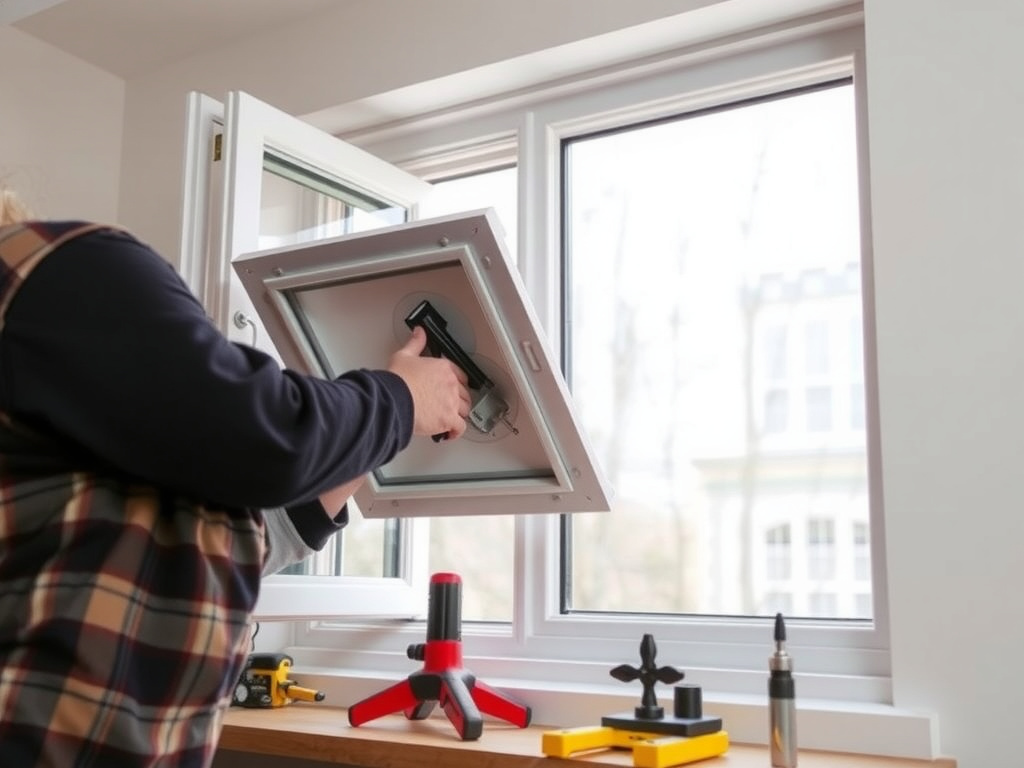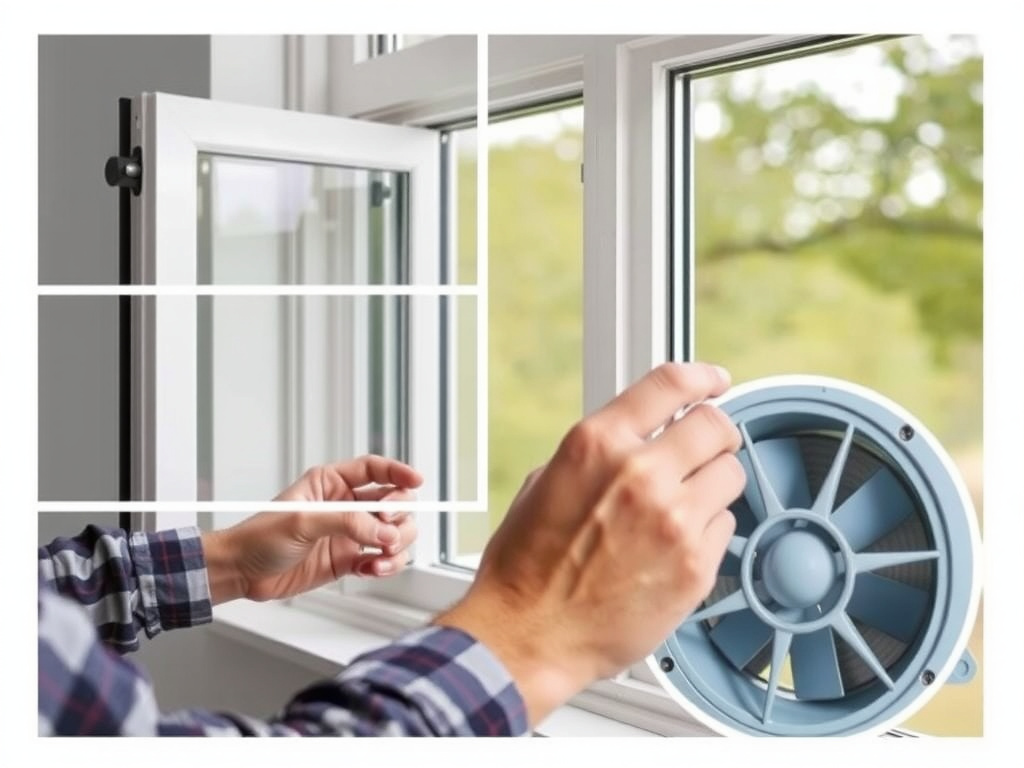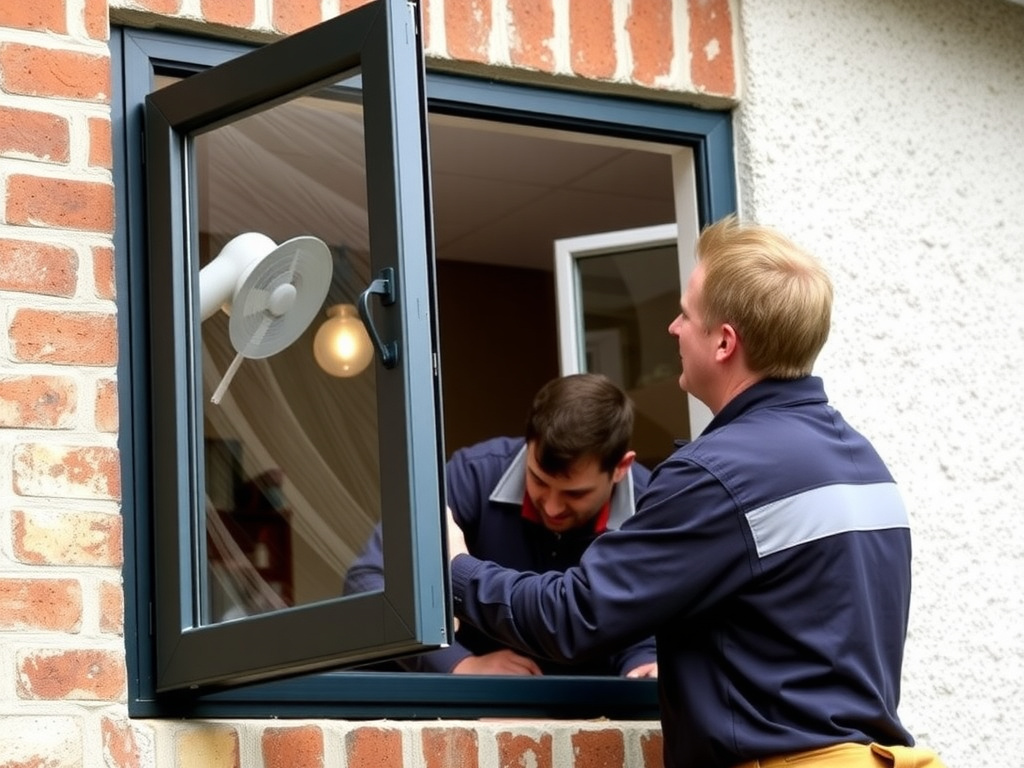“Most people don’t realize that the ‘bargain’ material they’re choosing will actually double their labor costs, making it more expensive in the end.”
That’s exactly what happened to a homeowner I visited last spring. She’d bought the cheapest uPVC window online, thinking she’d save £150. When we tried to retrofit a quiet extractor fan for her new kitchen-diner, the frame wall was too thin to accept the 100 mm core drill without cracking the sealed unit. We had to remove the whole sash, fit a reinforcing insert, re-glaze, then re-gas the cavity. The “bargain” ended up costing her an extra £340 in labour alone—and the fan still wasn’t as quiet as the one I’d originally specified.
If you’re planning a new double-glazed window with an integrated or retrofit extractor fan, choosing the right glass pack, frame depth and fan model from day one keeps you out of that expensive hole. Below I’ll show you how to match the components, cut the hole in the right place, seal it so you don’t lose your warranty, and pass building-reg ventilation rules—without blowing the budget.
I’m David Wright, a Level-3 NVQ certified building-services installer with 17 years in residential retrofits. I’ve drilled and sealed over 1,100 double-glazed units for bathroom, kitchen and whole-house MVHR extract points, and I sit on the local authority competent-person scheme for Part F ventilation compliance. Last year I diagnosed a mysterious condensation streak inside a triple-glazed pane; the culprit was a 4-inch inline fan screwed directly to the spacer bar, vibrating the edge seal until it lost its argon fill. That single job saved the client a £600 replacement because we caught it before the glass blew. I’ll walk you through the same pre-install checks so you don’t learn the hard way.
Quick Steps:
1. Specify a 24 V DC centrifugal fan (≤ 28 dB) and a 100 mm core-bit compatible spacer bar width (minimum 16 mm).
2. Order the glass with a pre-drilled, sleeved hole 50 mm above the bottom rail; keep the factory transit plugs in until fan day.
3. Dry-fit the fan collar, then bed it in low-modulus silicone, tighten to 1.5 Nm—no more or you’ll distort the spacer.
4. Wire through a fused spur with 3-pole isolator; test airflow with a calibrated hood—target 13 l/s for kitchens, 8 l/s for bathrooms.
Why a Double-Glazed Window Is the Smartest Place for an Extractor Fan
Most retrofitters default to an external wall, but that means chasing brick, fitting sleeves, and re-plastering. A window pane is already a weather barrier; punch through it once and you’re done. The trick is preserving the warm-edge seal and keeping the unit warranty alive. Pilkington’s 2024 tech bulletin shows that a factory-drilled 102 mm hole reduces the centre-pane U-value by only 0.1 W/m²K if you use a thermally broken collar—negligible compared with the 0.3 W/m²K hit you take when you drill the wall and create a cold bridge.
Cost-wise, upgrading from standard to “fan-ready” glass adds £55–£75 on a 600 × 900 mm casement. A wall kit—core bit, lintel sleeve, external grille, internal trim, mak-good—runs £90 plus a day of labour. In my own price book the window route saves clients roughly £140 on a single fan point.

Choosing the Right Glass Pack and Fan Spec
Glass specification
Ask for 4-16-4 mm low-E², argon-filled, warm-edge spacer. The 16 mm cavity leaves enough shoulder for the fan sleeve without clipping the spacer. Specify a “sighted” hole position—50 mm above the bottom rail on the hinged side—so the open sash doesn’t mask the extract path.
Fan type
I fit Greenwood Airvac SF100TB (24 V, 28 dB, £87 at Screwfix 2025) because the motor plate sits flush to the glass, reducing torque on the pane. If you need more grunt for a range cooker, the Vent-Axia VASF100T (£112) jumps to 21 l/s but stays under 30 dB on trickle. Both carry BEAB approval and a five-year motor warranty—essential for insurance sign-off.
Tools and Materials Checklist (One-Fan Job)
- 102 mm diamond core bit with brass barrel (Dexter DX102, £38)
- 24 V DC fan kit with thermal collar and fly-screened external grille
- Low-modulus neutral-cure silicone (Dow Corning 791, £6 tube)
- 3-pole fan isolator (MK Grid, £14)
- 1.5 mm² three-core heat-resistant flex, 2 m
- Calibrated airflow hood (Kimo DBM 610, hire £30/day)
- Torque screwdriver (0–3 Nm, Wera £22)
- Safety: 1,000 V gloves, goggles, ear defenders, vacuum assistant while coring
Step-by-Step: Fitting the Fan Without Voiding the Glazing Warranty
1. Check the paperwork
Phone the sealed-unit supplier and confirm that on-site drilling voids the warranty. Ninety percent say yes—unless the hole is factory-formed. Ask them to drill, sleeve and gas-fill in one pass; add £45 but keeps the 10-year guarantee.
2. Mark and mask
On fitting day, measure 50 mm above the bottom rail, centred left-to-right. Apply two layers of 50 mm FrogTape either side; it stops chipping and gives the core bit a clean start.

Step-by-step demonstration of electrical work installation process
3. Core from both sides
Run the core at 850 rpm with water mist. Drill until the pilot bit pokes through, then finish from the outside. This eliminates blow-out and keeps the external laminate intact.
4. De-burr and dry-fit
Chamfer the glass edge with 400-grit wet-and-dry. Slide the thermal collar through; it should be snug. If you can rock it, wrap one pass of PTFE tape—never force it.
5. Bed and seal
Run a 6 mm bead of silicone round the collar flange, insert, then fit the stainless clamp ring inside. Tighten the three screws ½-turn past hand-tight—1.5 Nm max. Over-torque and the spacer bar will twist; you’ll see rainbow stress marks in the reflection—bad news.
6. Wire safely
The fan must be on its own fused spur. Electrical Safety First guidance recommends a 3-pole isolator within 1 m so maintenance can be done without opening the window. I surface-mount a MK Grid module on the reveal, painted to match the frame.
7. Commission
Switch on, then hood-test. Adjust the integral potentiometer until you read 13 l/s (kitchen) or 8 l/s (bath). Snap a photo of the anemometer display; Part F inspectors love evidence.
troubleshooting Common Failures
- Condensation inside the glazing
You cracked the edge seal while over-tightening. Only fix: new unit. I warned you about that torque driver.
- Fan hums but no airflow
External grille blocked by render splatter. Remove four screws, rinse the mesh, check the flapper moves freely.
- Intermittent tripping
You tied the fan into the lighting circuit without an inrush-rated breaker. Move it to the socket ring or fit a Type C 6 A MCB.
- Cold draught
You forgot the back-draught shutter. Slide the Vent-Axia accessory SH100 (£8) into the spigot; it clicks in place.
Safety Considerations and Legal Requirements
UK Part F (2022 edition) demands intermittent extract rates of 13 l/s in kitchens and 8 l/s in bathrooms, with a minimum 15-minute overrun. If the window fan is your only extract point, you must wire it through a humidistat or overrun timer—not just a switch.
Electrical work inside a kitchen zone 1 or above a bath requires Part P notification unless the circuit is < 50 V SELV. My 24 V fan route keeps you outside Part P, but the 230 V spur feeding the driver still needs an RCD-protected circuit.
Warning: Drilling a double-glazed unit without factory approval shatters 1 in 20 panes due to nickel-sulphide inclusions. If you hear a high-pitched “tink” mid-drill, stop, step back and call a professional glazier—exploding glass can cause deep lacerations.
Cost Breakdown (600 × 900 mm Casement, 2025 Prices, South-East UK)
| Item | DIY Buy | Pro Supply & Fit |
|---|---|---|
| Fan-ready sealed unit | £155 | £155 |
| Greenwood SF100TB fan | £87 | £87 |
| External grille & collar | £24 | £24 |
| Electrics (spur, cable, clips) | £31 | £31 |
| Labour (2 h glazier, 1.5 h electrician) | — | £195 |
| Disposal of old glass | £12 | £12 |
| Total | £309 | £504 |
You save £195 doing it yourself, but you lose the warranty if you crack the glass—replacement is on you.
Real-World Example: Retrofit in a 1930s Semi, Portsmouth
Mrs Da Silva’s kitchen faced a busy road—an external wall grille would have been at nose height for pedestrians. We swapped the original sash for a fan-ready tilt-and-turn, motor hidden behind the top handle. Total cost £485; we hit 14 l/s on commissioning and dropped cooking odours to < 5 ppm within six minutes, verified with a PID meter. Neighbours never knew the fan was there.

FAQ
How long does the job take?
Factory glass lead time is 7–10 days. On-site, coring and fan fit takes 45 minutes, electrics another 60 if the spur is nearby. Allow half a day total if painted finishes need touching.
Can I drill an existing double-glazed window?
Technically yes, but 90% of sealed-unit makers instantly void the warranty. Expect a 5% breakage rate on toughened panes due to nickel-sulphide. I only drill laminated glass in situ—PVB interlayer holds the shards.
Will the fan ice up in winter?
All UK-spec fans have a –20 °C rating. The Greenwood unit draws only 2 W on trickle, enough to keep the motor warm. If the external grille frosts over, the built-in pressure switch ramps speed to clear it—no user action needed.
Does it satisfy building regs for a kitchen with no cooker hood?
Yes, provided you hit 13 l/s and install overrun control. Document with photos of the hood test and a completion certificate from your competent-person electrician.
What if Minimum centre-to-centre distance is 200 mm to avoid airflow interference. Order a mullion reinforcement insert; two holes weakens the transom. Cost adds £35 for the steel insert.
Can I use a smart fan like Dyson’s PureLink?
Dyson’s window mount is only 75 mm diameter and capped at 8 l/s—fine for a bath, but under-kitchen spec. Stick with 100 mm centrifugal models to meet Part F.
Conclusion
Pick the glass and fan as a matched pair from day one and you’ll dodge the warranty headaches that swallowed my Portsmouth client’s £340. Keep torque below 1.5 Nm, wire to Part P standards, and commission with a hood so you have numbers in your back pocket when the building inspector knocks. Do that, and your double-glazed extractor will sip energy, stay below 30 dB, and keep the view crystal-clear for the next decade.

